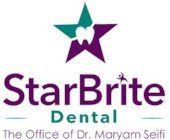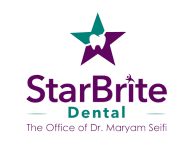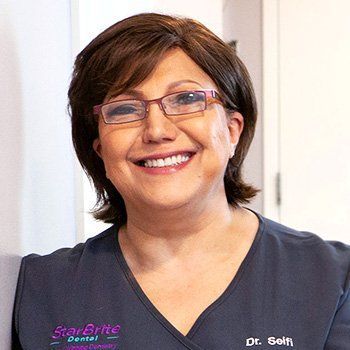StarBrite Dental Able to Take 3D X-Rays With Cone Beam CT Scanner
The Ability to Take 3D X-Rays With Our New Cone Beam Dental X-Ray Machine Will Help Us Serve You Better
We’re Riding the Wave of Dental X-Ray History
In 1895 Germany, a professor named Wilhelm Conrad Roentgen discovered rays that enabled him to see the bones in his hand—right through his skin. They became known as “Roentgen Rays” but the good professor dubbed them “x-rays.”
Shortly after Roentgen’s discovery was documented and published, a doctor named Otto Walkhoff got the idea that these rays could be of help in dentistry. With the aid of physicist Fritz Giesel, Walkhoff rigged up a glass photographic plate and rubber to create a method that somewhat resembled—in a very primitive way—a contemporary “bite-wing” x-ray.
Among the differences: 25-minutes of x-ray exposure time! It was a dangerous experiment, to be sure, but it resulted in the first-ever dental x-ray.
Reading that bit of history left us wondering how Roentgen, Walkhoff and Giesel would have reacted to the amazing images and incredibly low-radiation exposure of the new 3D dental imaging machine we have at StarBrite Dental.
Have a Look at Our New 3D X-Ray Machine
Are you ready to learn a fancy new word? Here it is: ORTHOPANTOMOGRAPH™. That’s what the manufacturer calls the incredible new x-ray machine we’re using at StarBrite Dental.
You’re probably very familiar with dental x-rays. One standard type was referred to above, and involves a series of images taken in sections, while you hold film in place by biting down on a bracing piece. Those are called, appropriately, “bite wing” images.
A technological step beyond those is known as a “panoramic” x-ray, which involves leaning against a chin rest while an x-ray beam is projected in an arc around your jaw, producing a single image of your whole mouth.
Both of those are excellent technologies, and we use them at StarBrite, but they only produce 2-dimensional images; there are times when we need a much more in-depth picture of a patient’s dental situation. That’s why we’ve added a KaVo OP 3D imaging unit to our diagnostic equipment. It’s a state-of-the-art system that uses cone-shaped beams to create a 3-dimensional image of the teeth and jaw.
3D images give us a highly accurate view of what’s going on inside your mouth, inside your jaw, and even inside your teeth. The information we gather through a cone-beam scan allows us to pinpoint trouble spots with exceptional accuracy, which gives us the information we need to create the most targeted treatment plan possible.
This same device has also enhanced those panoramic x-ray capabilities we mentioned. It has a 2D function that takes a panoramic image in just 9 seconds.
Delivering on our promise of the latest technologies.
This imaging machine has a great pedigree. The KaVo OP 3D is a product of KaVo Kerr, an organization created in 2017 by uniting the efforts of two companies whose combined roots stretch back to 1891.
Both the KaVo and Kerr companies have rich traditions of service to the world of dental care, spanning everything from sophisticated imaging systems to the materials and equipment dentists and hygienists use day to day.
Investing in this kind of quality is all part of keeping StarBrite’s longstanding promise to give patients the best possible care, using the latest scientific technologies available.
Of course, we’ve been making use of 3D technology for quite a while, but now that we have the ability to offer it onsite at our Rockville office, we’re delivering on that promise like never before.
Since we no longer have to give patients referrals to a facility that provides 3D imaging, we can diagnose problems faster, reducing the number of visits you need with us in order to get the treatment you need.
What it all means for you as a patient
We could rattle off a lot of numbers and specifications, but those wouldn’t mean much to you. For instance, our new system offers 36 field-of-vision (FOV) size alternatives that result in 117 FOV and resolution combinations.
What that means for patients is that we have an incredibly versatile diagnostic tool that can help us get a clear look at exactly the angles we need in order to view the area in your mouth that’s giving you a problem, as well as the surrounding areas that can be affected by whatever treatment we recommend.
That’s important for two reasons, the first being that we obviously need to know exactly what’s going on and where. But the second reason is so we can show you the exact same evidence. We’re not here to simply perform procedures on your teeth. Our goal is to partner with you in your overall dental health; that means making sure you understand exactly what your treatments entail and why we’re recommending them. StarBrite Dental will never perform a procedure that you don’t thoroughly understand. 3D imaging technology lets us give you a level of clarity about your dental needs that no amount of conversation alone could ever provide.
And the range of treatments this system can help us with is broad: the placement of dental implants, dental surgery planning, infections inside of teeth, analyzing jaw disorders and fine-tuning the precision of orthodontics, just to name a few.
Patient-friendly AND environmentally friendly
That’s right. As if our KaVo OP 3D system weren’t impressive enough, it’s considerate for the environment, too. Where lead is typically used for radiation shielding, the KaVo OP 3D uses a more ecologically and environmentally friendly alternative that provides equivalent shielding. It also has a power-save feature that helps reduce our overall consumption of energy.
We’re looking forward to everything this new technology means for our patients and our ongoing practice. Dr. Maryam Seifi, founder and senior dentist at StarBrite Dental, put it well: “I have always been proud to have the cutting-edge technology in dentistry, and I feel very privileged to be in a practice where, while all these new advantages are happening, I can use them for the benefit of my patients.”



